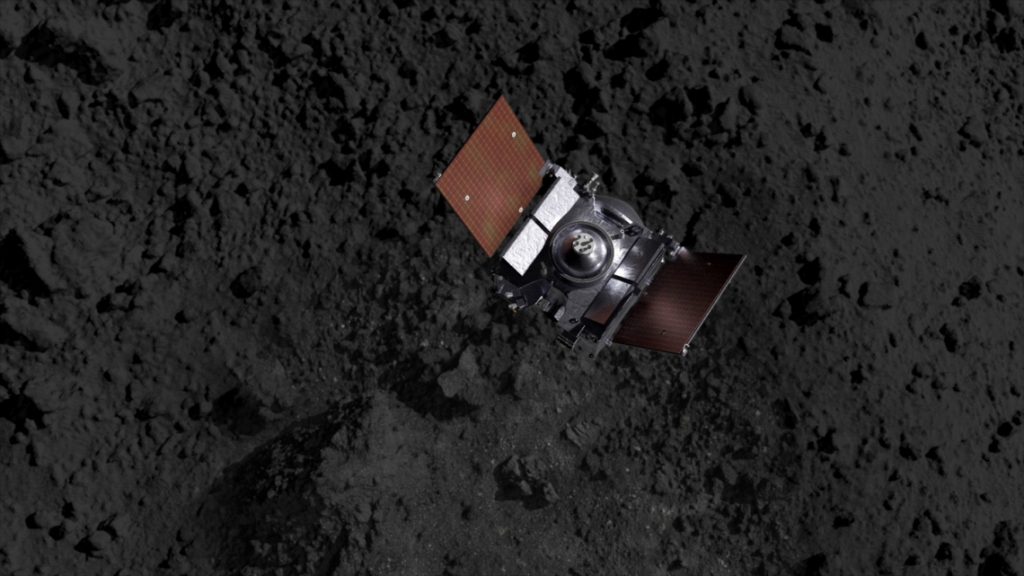
In case you have been hiding under a rock, the OSIRIS-REx mission has successfully booped the rubble pile asteroid Bennu.
The mission began its maneuvering on Monday, changing its orbit in preparation to drop down to touch the surface. Final maneuvers began Tuesday, and we broadcast those instead of our normal episode. The mission’s target was a relatively smooth spot in the heart of Nightingale Crater, a depression near the northern pole of Bennu.
When originally considered as a sample site, Nightingale Crater was considered a bit too boulder-strewn, but it was quickly realized that pretty much everything on Bennu is boulder-strewn, and this region was the best available combination of science-rich and safe enough.
When the OSIRIS-REx mission was planned, no one knew this was going to turn out to be a rubble pile asteroid. It was assumed this 0.5 kilometers across asteroid would be rocky in places and smooth in places, like the similarly sized Itokawa asteroid. It was also planned that the spacecraft would be able to use its laser altimeter to safely drop to the surface and rise back up with not a lot of fancy image processing being required.
Bennu, however, opted to remind us the universe does not care what we think, anticipate, or plan. It is going to do things in its own way. For Bennu, this meant that there were no smooth places at all. There were only rocks on boulders on boulders with more rocks.

To safely make it to the surface and into the several-parking-spaces-across safe area, the mission had to match what its cameras were capturing with previously made maps of the region and maneuver by image matching rather than the simpler laser altimetry. Luckily, this spacecraft is working perfectly and was designed with the flexibility we didn’t know we’d need, and it was able to pull off all needed maneuvers perfectly. It spent a bit more than 10 seconds touching the surface with its touch-and-go sample acquisition mechanism (TAGSAM) instrument. During that time, it expelled a blast of nitrogen gas and pulled in the blasted up debris. The mission is hoping for a few grams of material but has the capacity to hold much more if much more happened to try to fit through the sample collector’s 2cm opening.
Over the weekend, the mission team will be rotating the spacecraft and will use the moment of inertia measurements to estimate how much material they have picked up. If they somehow came up empty, there are additional nitrogen canisters aboard, and they can go try up to two additional sites. They won’t return to Nightingale; after disturbing the surface, they can no longer use their image matching routines to find their way to the chosen site. There are, however, three backup sites already selected.
These sites represent the perfect combination of a bit less boulder-strewn and scientifically interesting. Identifying them required myriad researchers and several 1000 CosmoQuest volunteers who helped by marking rocks, measuring boulders, and tracing out craters. Our congratulations go to the mission team on the successful touch-and-go of their spacecraft, and our thanks go to all the citizen scientists who helped mark the oh-so-very-many rocks and boulders, with more rocks and more boulders, that litter this world.




 Join the Crew!
Join the Crew!
 Escape Velocity Space News
Escape Velocity Space News
Dr. Gay, thank you so much for this newsletter. I am one of the lucky volunteers that were able to help you guys map Bennu and then helped with the 4 possible sample sites. As a 76 year old retired disabled labourer I feel so fortunate and lucky to have part of the Bennu saga.This is such an honor for me.
Thank you again and hopefully I will be around to see the sample return.